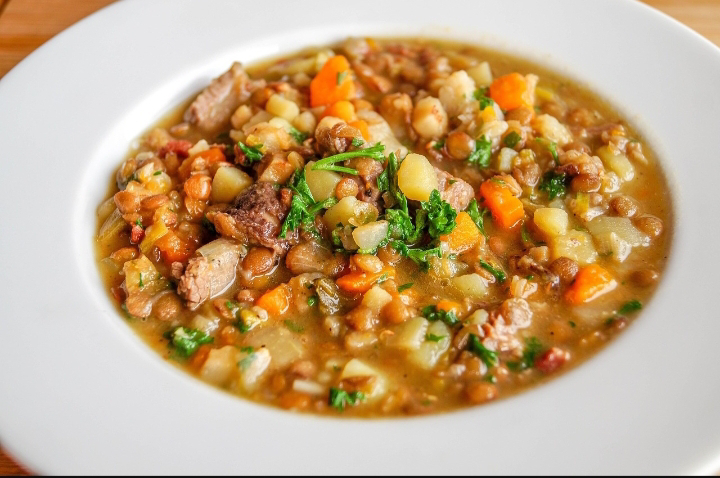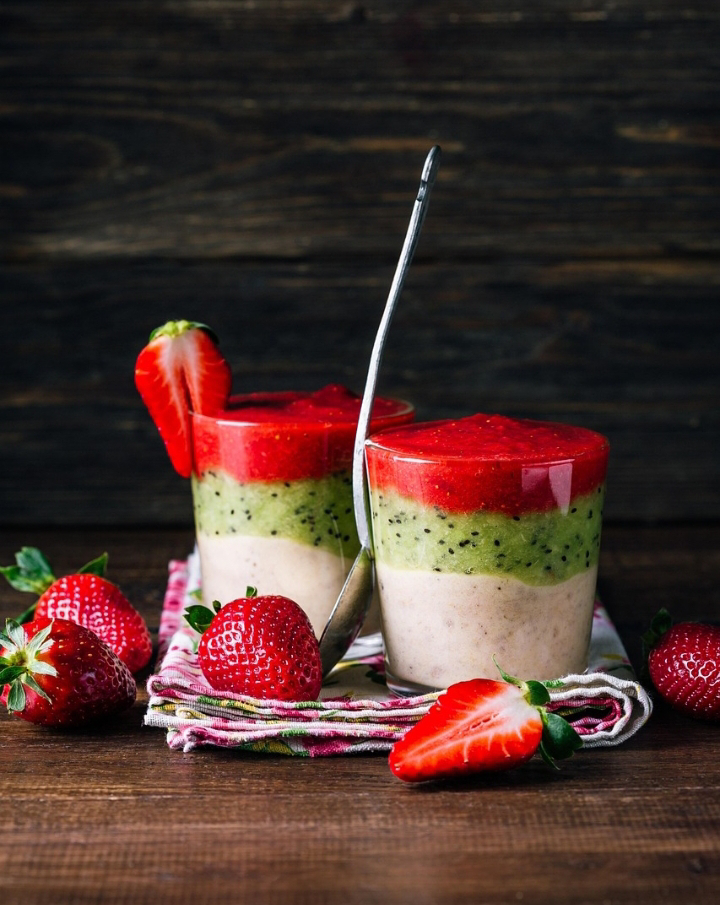The Power of Soft Foods
Soft Food: Types, Benefits, and Nutritional Power for All Ages
Monica Saxena
| Wellness Blogger | Certified in
Holistic Health & Nutrition | Fully Accredited Professional Nutritionist |
It is usually recommended in situations where chewing or digestion needs to be gentle. The soft food can sometimes be bland, like hospital meals or foods for babies and seniors, but it can be tasty and healthy too if cooked at home with love and a dash of your favourite spices. If you look into various kinds of soft foods, you will find them genuinely versatile and beneficial.
Whether you're recovering from a medical procedure, caring for a child, or simply looking for easy-to-digest meals, soft foods offer a range of benefits that can support your overall well-being at any age.
Let us explore what soft foods are, the various types available, and how they can benefit people from all walks of life.
What Are Soft Foods?
We all know soft foods can be any foods that are easy to chew and swallow. They usually have a tender texture, require minimal chewing, and are often moist. These foods are varied with fruit, nuts, cereals, grains, or pulses commonly recommended after dental surgery, during illness recovery, or for individuals with chewing or swallowing difficulties.However, soft foods aren’t just for specific situations—they can be a healthy and comforting choice for everyone. For many people, soft food isn't just about physical need—it's emotional comfort. In fact, soft food and comfort food often overlap, especially during times of stress, sadness, illness, or nostalgia.
Types of Soft Food
There are many soft foods, both savoury and sweet, plant-based and animal-based. Khichdi, curd rice, halwa, and Pongal are the popular examples of soft food in India; macaroni & cheese, mashed potatoes, yoghurt, smoothies, soups, scrambled eggs, and applesauce are the popular soft foods in the US. In Japan, it is okayu (rice porridge); in Korea, it is juk (rice porridge); and in the Middle East, the popular soft food is hummus with pita and lentil soup. Here’s a categorised list of different types of soft foods:1. Cooked Cereals & Grains like Oatmeal, Cream of wheat, rice, Soft porridge (dalia)
Khichdi (well-cooked), Semolina (sooji upma, halwa), Soft-cooked pasta or noodles, Well-cooked rice or soft idlis
2. Cooked Vegetables like Mashed potatoes or sweet potatoes, Steamed or boiled carrots, peas, or pumpkin (very soft), Bottlegourd (lauki), ridge gourd (turai), ash gourd, Spinach (well-cooked and blended if needed), Avocado (ripe and mashed)
3. Fruits (Soft or Cooked) like Ripe bananas, Stewed apples or pears, Applesauce, Papaya, Mango (ripe and soft), canned peaches, or fruit puree
4. Protein Sources such as Soft-boiled or scrambled eggs, mashed paneer, or soft tofu, Well-cooked lentils or moong dal, Chicken or fish (boiled, shredded, or mashed), Soft-cooked beans (mashed rajma, chole without skins). Some easy-to-grab protein sources
5. Dairy & Alternatives such as Yoghurt or curd, Buttermilk (chaas), Soft Cheese, or cottage cheese
Milk (if tolerated), milkshakes, or smoothies
6. Breads & Snacks like Soft white or brown bread (without crust), dhokla, or Poha (if very soft)
Roti soaked in dal or milk, pancakes, or soft crepes
7. Desserts like Custard, Pudding, Kheer or payasam, Soft halwa, fruit smoothie
Why Soft Foods Make Sense in Everyday Life
Soft foods are ideal for those with busy lifestyles, picky eaters, and anyone looking for simple, nourishing meals. They are not just for special situations, but they offer convenience, comfort, and health benefits, and sometimes they are our comfort food.They are easy to prepare, as many soft foods require minimal cooking, just a little steaming, boiling, or blending. Soft foods are great for quick meals with fewer steps and ingredients and are easy to cook. In today’s busy life, they are ideal for people with limited time or cooking skills. A few interesting examples are scrambled eggs, which take 5 minutes; smoothies with fruits, veggies, and yoghurt in under 3 minutes; and instant oatmeal with toppings for a fast breakfast, besides our childhood favourite khichdi, dal-chawal, and sooji kheer (semolina milk dessert), which are tasty and nutritious
They are gentle on the digestive system; soft foods are easy to chew and swallow, which reduces digestive effort. It is quite useful for people with acid reflux, irritable bowel syndrome, or sensitive stomachs.
They provide digestive-friendly choices; many soft food variations like mashed sweet potatoes, soft rice with steamed vegetables, applesauce, or bananas are easy on the tummy. So if you have to feed a child with an upset tummy or someone with a digestive issue, you have many choices of soft food at your disposal.
They are versatile and customizable, as soft foods can be adapted to suit nearly any diet, whether it is vegetarian, vegan, gluten-free, high-protein, or low-carb. You can vary the flavours and textures with herbs, spices, and toppings. For example, you can blend cooked lentils with coconut milk for a creamy vegan soup or make protein-rich Greek yoghurt bowls with soft fruits and honey. In addition, you can puree roasted veggies with spices for flavorful dips or sauces.
They are inclusive for all ages, and soft food bridges the gap across generations from toddlers to seniors. It is ideal for multi-generational households where meals need to suit everyone. For infants and toddlers, soft foods serve as a gentle transition from milk to solids. Mashed fruits, soft grains, and pureed veggies introduce nutrients without posing a choking risk. The most age-inclusive soft foods are pasta with creamy sauces, mashed fruits and vegetables, porridge, and custard.
They support health goals. Whether you're trying to gain weight, maintain energy, or eat more whole foods, soft food can support your nutrition. You can load it with nutrients by adding nut butters, olive oil, or seeds to increase calories and healthy fats. Blended vegetables and legumes can be added to increase fibre and plant-based protein. Incorporate soft dairy or alternatives to boost calcium and vitamin D.
They can provide comfort and emotional wellness. Soft foods are often associated with comfort—warm soups, mashed potatoes, khichdi, curd rice, suji halwa, or pudding can have a soothing, nostalgic effect. They are perfect for days when you're tired, unwell, or simply need something nurturing. These are often the foods we were given as children when we were sick or sad, and they give us the feeling of emotional security and nurturing.
Nutritional Benefits Across Age Groups
Soft foods can be just as nutritious as regular meals when carefully planned. The key is to include a variety of food groups that offer
1. Macronutrients
Protein in soft food made of lentils, eggs, paneer, and tofu is essential for tissue repair, immune function, and muscle maintenance.
Carbohydrates in oatmeal, mashed potatoes, rice, whole grains, and pounded wheat provide the body’s main energy source.
Healthy fats in avocado, soft cheese, and nut butter are excellent as they support brain health, hormone production, and satiety.
2. Micronutrients
Vitamins: Soft fruits and cooked vegetables provide vitamins A, C, K, and B-complex, which are essential for maintaining immunity, energy, and overall well-being.
Minerals: Iron, calcium, potassium, and magnesium are often present in soft leafy greens, dairy, and legumes.
Fibre: Soft whole grains and cooked vegetables offer soluble fibre, aiding digestion and regulating blood sugar.
You can include lesser-used but gut-friendly grains like ragi (finger millet) porridge, foxtail millet upma (cooked soft), and barnyard millet khichdi in your soft food menu, as these are good for their calcium, iron, and fibre content, and how easy they are to digest when softened.
3. Hydration
Many soft foods, such as soups, fruits, and yoghurts, have high water content, which helps maintain hydration, especially important during recovery.
Why should you eat soft food often?
Soft foods aren’t just a fallback option—they’re a smart, adaptable choice that can be comforting, nutritious, and satisfying for people of all ages. Whether you’re dealing with a medical need or simply seeking a more gut-friendly meal, adding soft foods to your diet can be a gentle and nourishing way to care for your body.
Soft foods are nutritionally superior to our everyday food. In fact, when chosen wisely, they can be nutrient-rich, healing, and easy on the body, especially during times of illness or recovery. They help maintain strength, reduce digestive stress, and support faster healing—all while being gentle and comforting.
Including soft foods in your diet doesn't mean compromising on health—it often means enhancing it. Many soft foods like rice, lentils, and bananas offer an affordable staple diet for many. For working professionals, it's a quick and easy option to make and eat while multitasking.
Soft food isn’t a restriction—it’s a smart, adaptable, and inclusive way to eat. It offers simplicity without sacrificing nutrition, and it supports your health, comfort, and convenience in daily life.
Whether it’s a warm bowl of soup on a rainy day or a creamy smoothie before work, soft food is more than just a necessity.
Soft food is a lifestyle choice that blends wellness and ease without compromising on nutrition.











Comments